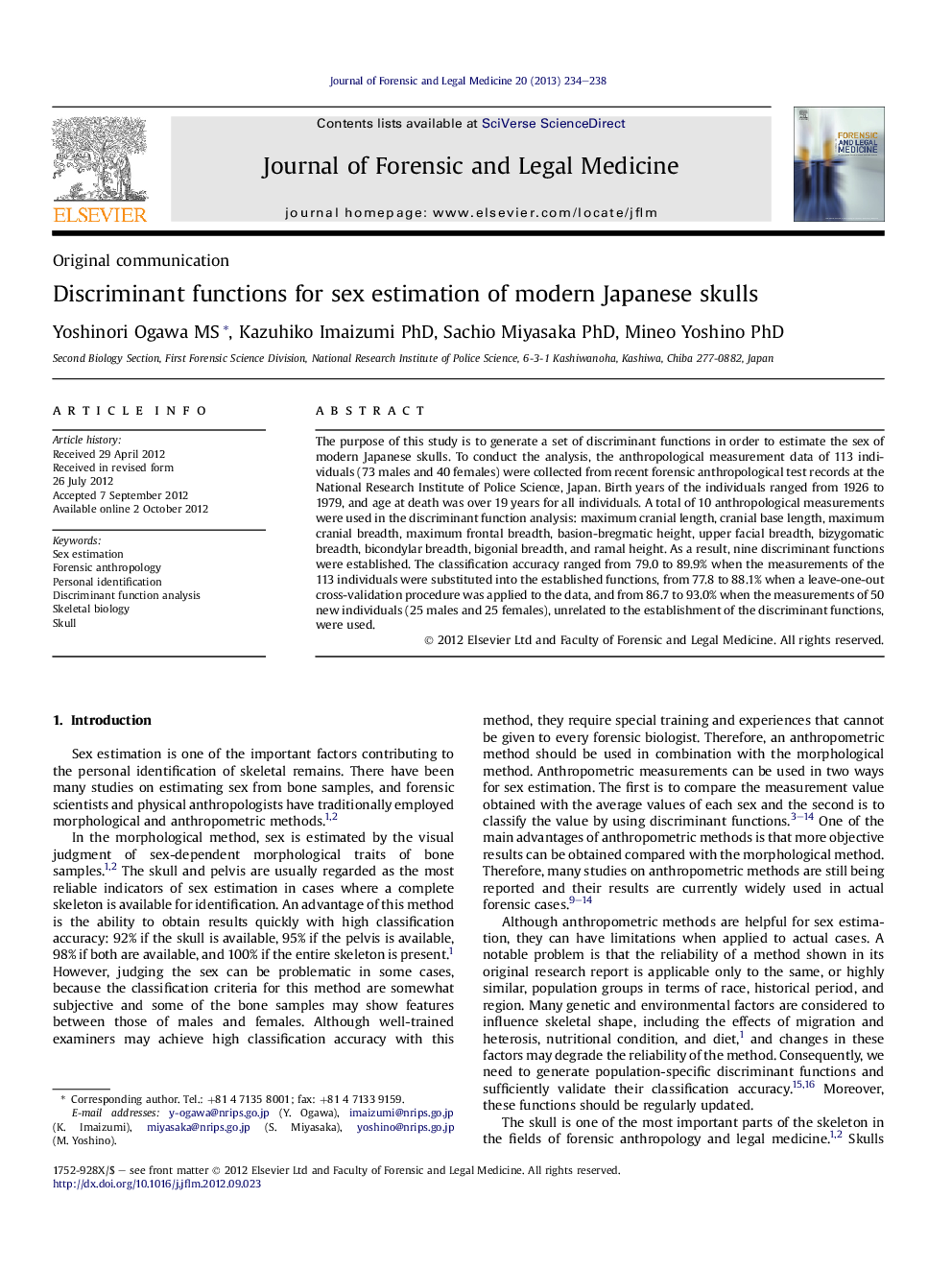| کد مقاله | کد نشریه | سال انتشار | مقاله انگلیسی | نسخه تمام متن |
|---|---|---|---|---|
| 102247 | 161312 | 2013 | 5 صفحه PDF | دانلود رایگان |

The purpose of this study is to generate a set of discriminant functions in order to estimate the sex of modern Japanese skulls. To conduct the analysis, the anthropological measurement data of 113 individuals (73 males and 40 females) were collected from recent forensic anthropological test records at the National Research Institute of Police Science, Japan. Birth years of the individuals ranged from 1926 to 1979, and age at death was over 19 years for all individuals. A total of 10 anthropological measurements were used in the discriminant function analysis: maximum cranial length, cranial base length, maximum cranial breadth, maximum frontal breadth, basion-bregmatic height, upper facial breadth, bizygomatic breadth, bicondylar breadth, bigonial breadth, and ramal height. As a result, nine discriminant functions were established. The classification accuracy ranged from 79.0 to 89.9% when the measurements of the 113 individuals were substituted into the established functions, from 77.8 to 88.1% when a leave-one-out cross-validation procedure was applied to the data, and from 86.7 to 93.0% when the measurements of 50 new individuals (25 males and 25 females), unrelated to the establishment of the discriminant functions, were used.
Journal: Journal of Forensic and Legal Medicine - Volume 20, Issue 4, May 2013, Pages 234–238